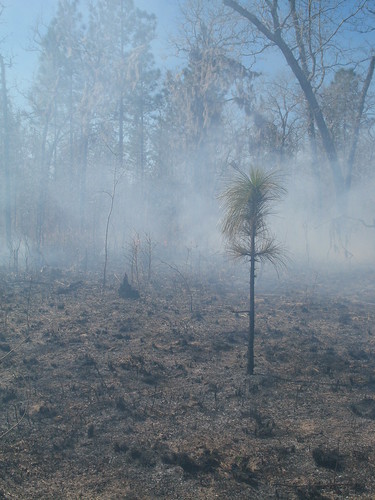
In this type of natural community, Longleaf Pines are the main tree species with some, infrequent Oaks. The tree canopy is very open and there is enough sunlight coming through for grasses and herbs to grow. It is very easy for Deer or Turkey or Gopher Tortoises to move about and find food. When regular fires come through, they are low, quick fires that do not burn as hot as they would be with years and years of pine needles and leaves and debris. Because land is much more broken up from development than it was before, natural fires do not happen as often. We use burn prescriptions to tell us what conditions are right to achieve the right kind of fire, at the right time and frequency to keep everything in balance. When we light the fire, we use a drip torch. It is a special canister with the right mixture of fuels. The fuel drips over a burning wick and literally pours fire on the ground. We use the wind speed and direction, as well as good, dry fuels like grass or pine needles to carry the fire across the area we want to burn. The fire stops when it gets to fire breaks such as areas that are already burned or dirt roads or the river.

The fire carries very quickly through some areas, like the section pictured below. The two photos were taken just a few minutes apart. You can see that the taller trees really do not burn at all.
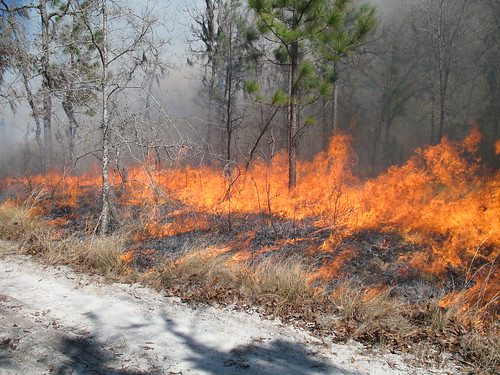
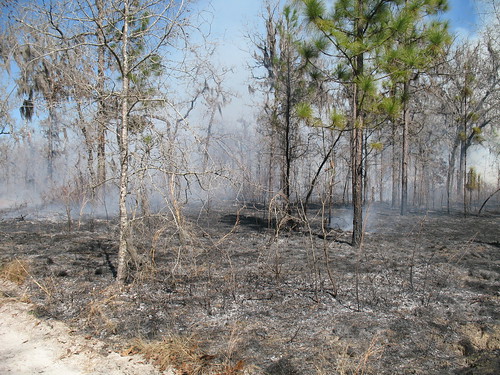
Sometimes there are smaller Oaks that are starting to get thick. The fire does kill some of the smaller Oaks, but it keeps them spread apart nicely. Some of the Oaks survive the fire.

The majority of my day was spent driving a fire truck. It is not the big red ladder truck that you see in town, it is much smaller so that it can move through the woods. It does carry a big tank of water and a hose to put out fire that we don't want. It also has lots of tools and fuel and drip torches. This fire truck does still have flashing red lights, in case you were wondering. Later in the afternoon, I did get some time with the drip torch as well.
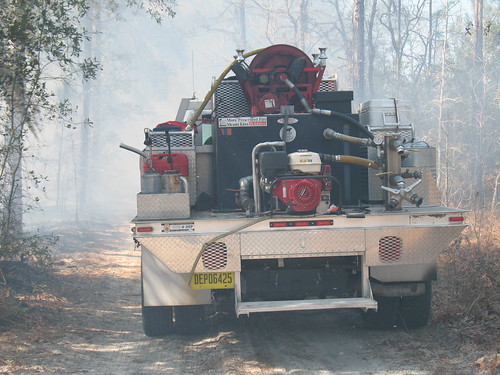
It was a beautiful day on the fire line. It was very cool, so the warmth of the fire felt great. There was not a cloud in the sky and the smoke cleared very quickly as well. The sun was shining and there was just a light wind (which we needed for the fire). I realize that fire is not a beautiful thing to everyone. Fire can certainly be devastating, but fire to me means a new chance for growth. If you have any questions about prescribed fire or firefighting, please feel free to post a comment.
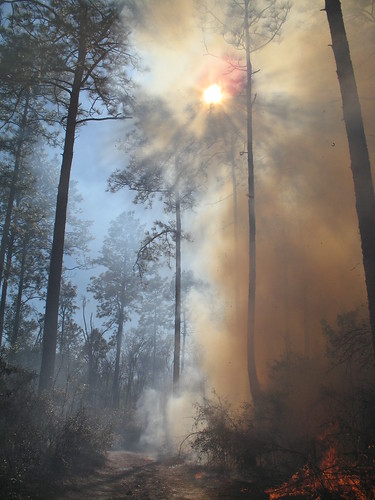
1 comment:
Great explanations and photos! Guess who's proud as can be that you play so well with fire.
Post a Comment